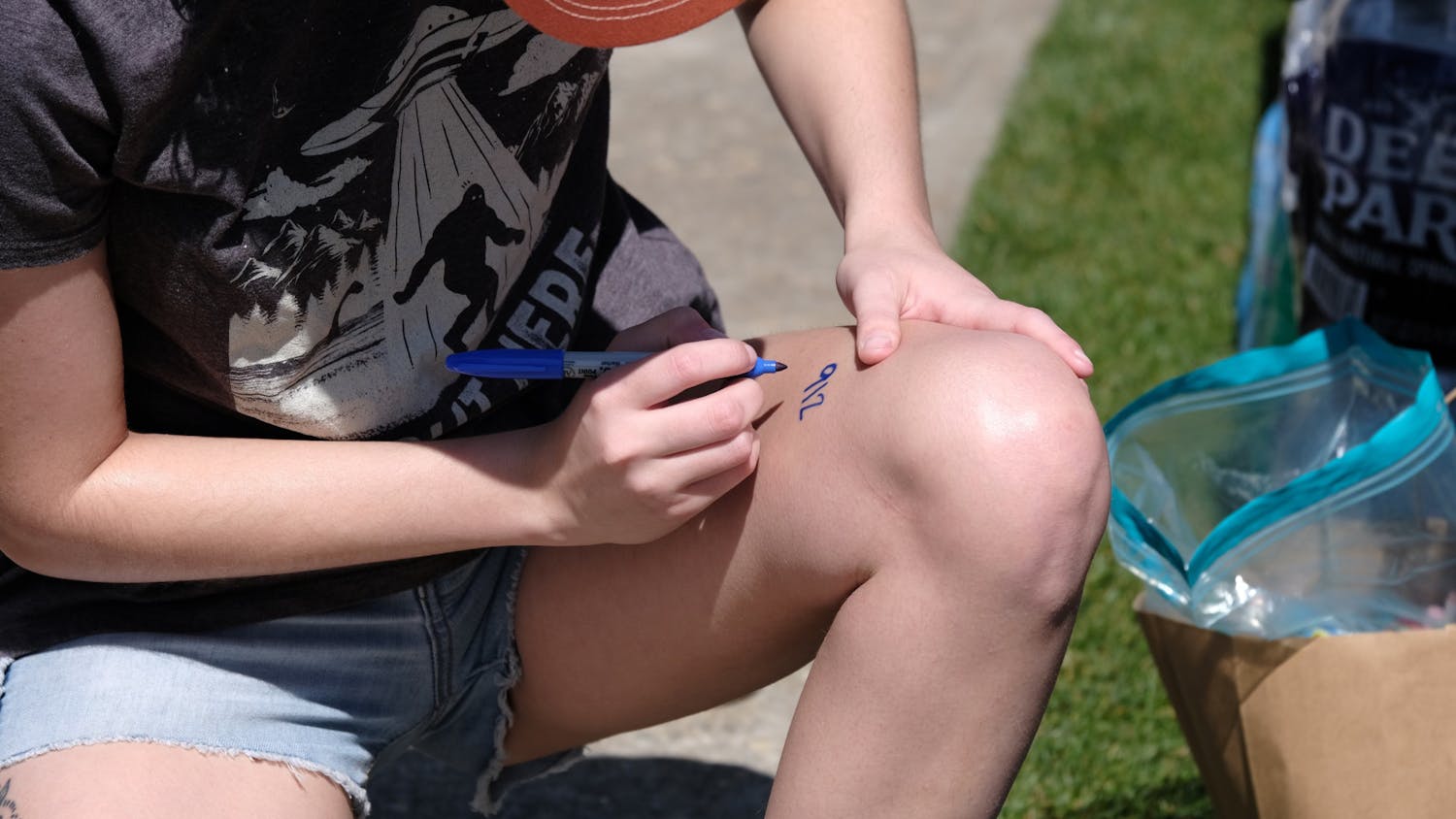

Troy, the once-thought fictional city featured in Homer’s the “Iliad”, was the focus of the Great Books lecture given by Dr. Charlotte Thomas and Dr. Achim Kopp on Sept. 26. The lecture, entitled “The Archaeology of Troy and the ‘Iliad’,” was attended by many Great Books students and non-students alike. The “Iliad” is one of the “great books” read by all students on the Great Books track during their first semester here at Mercer University. Thomas, a Mercer alumna, went through the Great Books program when she was a student here, while Kopp is the director of the Great Books program. Both professors traveled to Troy over the summer with a number of students to witness the ongoing excavation. These facts left both professors more than qualified to present this information delivered in the lecture. Upon returning from Troy, located in present-day Turkey, Thomas and Kopp gained enough interesting information to give the presentation that took place on campus in the Science and Engineering Building. The one hour lecture was followed by a quick 30 minute question and answer period where even questions that stumped the lecturers were asked.
The presentation began with Kopp, the director of the Great Books program as well as a professor in foreign languages and literatures, who walked the audience through the beginning steps leading to the excavation of Troy. He explained that the first “archaeologist” of mythical Troy was not even a true excavator at all. Frank Calvert, interested in Homer’s work and Greek mythology, became aware of rumors that the mound of Hisarlik may be a possible candidate for Homeric Troy. Calvert then bought 2000 acres of land on the eastern side of the mound in 1847, based solely on the hope something related to Homer’s beloved work would be discovered there. Calvert, partnered at the time with the better-known Heinrich Schliemann, uncovered the multi-layered city in the 1870s. Kopp explained how passion for Homer’s work led to breakthroughs in both archeology, which was a relatively new science at the time, and the discussions surrounding Homer’s epic poem. Kopp concluded that finding Troy in a physical sense has led to deeper connections to the famous story by presenting a partial visual to all that is described by the poet.
Taking over, Thomas began leading the lecture into deeper topics regarding why it is so important to the integrity of the epic for the city of Troy to actually exist, and the importance of “not only finding Troy in space, but also in time.” Thomas explained that though Troy was discovered to be on the eastern tip of present-day Turkey, there were still layers built naturally by the progression of time to sift through in order to find the Troy depicted during the Trojan War. When Schiemann led the excavation in the 1870s, several surface layers of the city were destroyed due to bulldozers used by Schiemann to get to the second layer of Troy, the layer favored by the early excavator. Due to this cursory search for Troy many artifacts from those layers were absolutely destroyed. Thomas pressed that in order to properly study the ancient city, and when studying other topics in general, it is important to be particular and careful throughout the learning process.
The Trojan War is believed to have taken place between the 12th and 13th century B.C. While no ancient weapons relating directly to the battle have been found, architectural evidence suggests that a battle did take place at Troy. Small houses had been built swiftly in the crevices between larger buildings around this time, and it is likely that they were built to store war provisions. Many weapons Homer describes in the epic have been found in neighboring cities, such as a shield used by Homeric heroes, and a boar’s-tooth helmet just as the one Homer describes Trojan hero, Hector, to have worn. However, Thomas admits that there are discrepancies between Homer’s epic and reality, such as chariots depicted in the story. Homer has his heroes riding into battle on their chariots and swiftly jumping down to the thick of the fray. However, actual chariots during this time would not have been practical to use in this way. This type of discrepancy may be attributed to the 400 years between the epic and the actual battle, or to the fact that much of the story had been passed down through oral tradition before being written. While Troy is widely believed by scholars to have been found at the excavation site, the discussion still goes on about the legendary battle. Questions are still brought up regarding how much of the story is only legend and how much can be trusted.
The lecture closed with a brief question and answer session where Thomas made a request for students to travel with the philosophy and art department this summer. It is thanks to this department and its trips that lectures such as this one even take place. The department has been taking students to various countries around the globe since 2001, and she stands by that the trips have always had an amazing impact on those involve. She encourages those interested to contact her at thomas_cc@mercer.edu or anyone involved with inquiries about future trips.
Great Books invites students on an expedition





